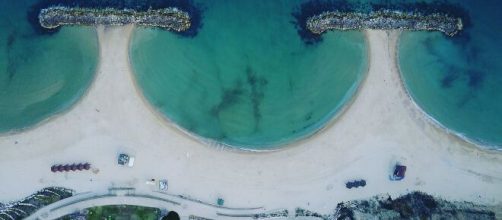Representatives of the Environmental Protection Ministry and the Shipping and Ports Administration conducted an unplanned inspection of the Greek tanker, Minerva Helen, in Piraeus on Saturday, February 27. According to the Maritime Executive magazine, the boat was drifting in the Eastern Mediterranean from February 4-11. During an inspection was confirmed that the Greek tanker had not had any leakage and was not involved in any STS transfer or other activity that could have caused an oil spill in the area and mass contamination of marine life. All statements of the Israeli Ministry of Environmental Protection of wrongdoing the Greek tanker have been removed.
Environmental Protection Minister Gila Gamliel wrote on her Twitter: "After a nightly investigation that ended in the last few hours, the Greek ship was cleared of suspicion of involvement in the tar incident. We are continuing the investigation and are committed to doing everything possible to locate the ship that is responsible for polluting the shores of Israel for the benefit of the public, nature, and animals."
Earlier last week, a joint Israeli-European investigation into the Mediterranean Sea oil spill began when thousands of tons of thick black tar were washed out by the waves along more than 160 kilometers of Israel's coastline. It caused irreparable pollution to the ecosystem and also led to the closure of beaches.
In addition to taking active steps to clean up the pollution area, Israeli authorities are trying to identify the illegal oil spill source. According to The Washington Post, "the investigation has been underway since at least mid-February when reports surfaced of massive amounts of sticky black tar appearing along Israel's 120-mile stretch of shoreline."
The first statements about the oil spill
February 17, strong waves carried a black, thick tar on the Mediterranean coast near Rosh Hanikra in northern Israel during a storm. The pollution scale is so high that the Israeli Ministry of Interior asked people to stay away from their beaches.
The Israel Nature and Parks Authority report about 1200 tons of oily waste have already been removed from the coastline.
The highest concentration of pollutants has been observed in the north of the country, from Netanya to Haifa and Lebanon's border. The most inaccessible areas are on the rocks and cliffs because these contaminated surfaces cannot merely be cleaned out or removed (such as sand or gravel). Cleaning up the damaged area and restoring maritime safety can take many months or even years.
Damage of wildlife
On February 18, a 17-meter-long young whale was washed up dead on the beach in the Nitzanim Nature Reserve in southern Israel after swallowing black tar. The fin whale was found along with other sea creatures: six juvenile sea turtles have also died of tar poisoning, but the other six have been saved.
Another problem remains unresolved: although visible water and shoreline pollution are being actively cleaned up now, much of the oil products could sink to the sea's bottom.
Danger to humans
Thousands of volunteers took to the Israeli coast over the weekend to clean up pollution on the beach. In doing so, Nature and Parks Authority urged people to stay away from the shore because it is necessary to use appropriate protective equipment to clean up the oil spill, which protects the person's health while allowing the residue to be removed correctly suitable place.
Israel's government has also recommended that beach areas not be used for swimming, sports, and leisure until the health risks have been eliminated.
Experts warn that tar contamination can break down into invisible particles. It is dangerous because they can be absorbed into the air and drinking water. Besides, the Israeli authorities have prohibited the distribution or marketing of any seafood from waters harvested in the Mediterranean off Israel's coast for reasons of caution.


